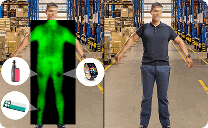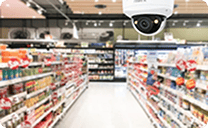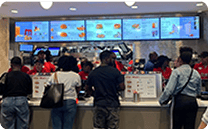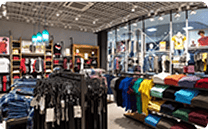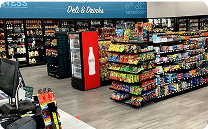In This article
Retail analytics uses data to understand and optimize a retail business’s performance. It includes gathering and interpreting information from sales transactions, customer behavior, stock levels, inventory movements, staffing levels, and in-store activity. By transforming this raw data into actionable insights, businesses are better equipped to manage day-to-day operations and long-term strategies.
At its core, retail analytics answers these key questions:
- What products are selling?
- Who is buying them?
- When and where are purchases happening?
- Why do some items sit on the shelf while others move quickly?
The ability to analyze and act on these insights helps retailers operate more efficiently, respond to customer needs, and remain competitive in dynamic environments.
Retail Analytics Tools
Retail analytics tools pull data from multiple sources, including point-of-sale (POS) systems, customer relationship management (CRM) platforms, video surveillance, inventory software, foot traffic counters, and online ordering channels. When these systems are integrated, they offer a comprehensive picture of the business’s activities.
For example, a retailer may notice that certain products underperform during specific hours of the day. By comparing transaction data with video footage and dwell time analytics, the business can determine whether display placement, staff availability, or customer flow affects sales. These findings can be used to rearrange shelves, reassign staff, or adjust promotional timing to drive improvement.
Improved Forecasting
Retail analytics also supports more accurate forecasting. By analyzing historical sales trends and seasonal patterns, retailers can prepare for spikes in demand or avoid overstocking items that are likely to underperform. This leads to improved inventory management, reduced waste, and higher profit margins.
Key areas where retail analytics adds value include:
- Sales performance: Understanding which products, promotions, or sales associates drive revenue.
- Inventory optimization: Identifying stock levels, turnover rates, and restocking needs.
- Customer insights: Learning who your customers are, what they buy, and how often they return.
- Operational efficiency: Aligning staffing with foot traffic trends or identifying inefficiencies in checkout lines.
- Loss prevention: Flagging irregular transactions, high-risk shifts, or shrink-related patterns.
These insights are helpful at the store level and across regions or chains. Corporate leadership can compare data between locations, identify best practices, and replicate success where needed.
Retail analytics is compelling when paired with visual confirmation. Video surveillance can validate assumptions found in data and provide deeper context, such as how customers interact with displays, how staff move during busy times, or whether a promotion receives the expected attention.
Drive Smarter Retail Decisions with DTiQ
DATAiQ empowers retailers to go beyond basic reporting by combining sales data, video analytics, and behavioral insights into one integrated platform. Whether improving merchandising, fine-tuning staffing schedules, or reducing shrink, DTiQ helps you make confident decisions based on real-world activity. With DTiQ, your data becomes more than numbers—a powerful driver of retail performance. Contact us to learn more.
